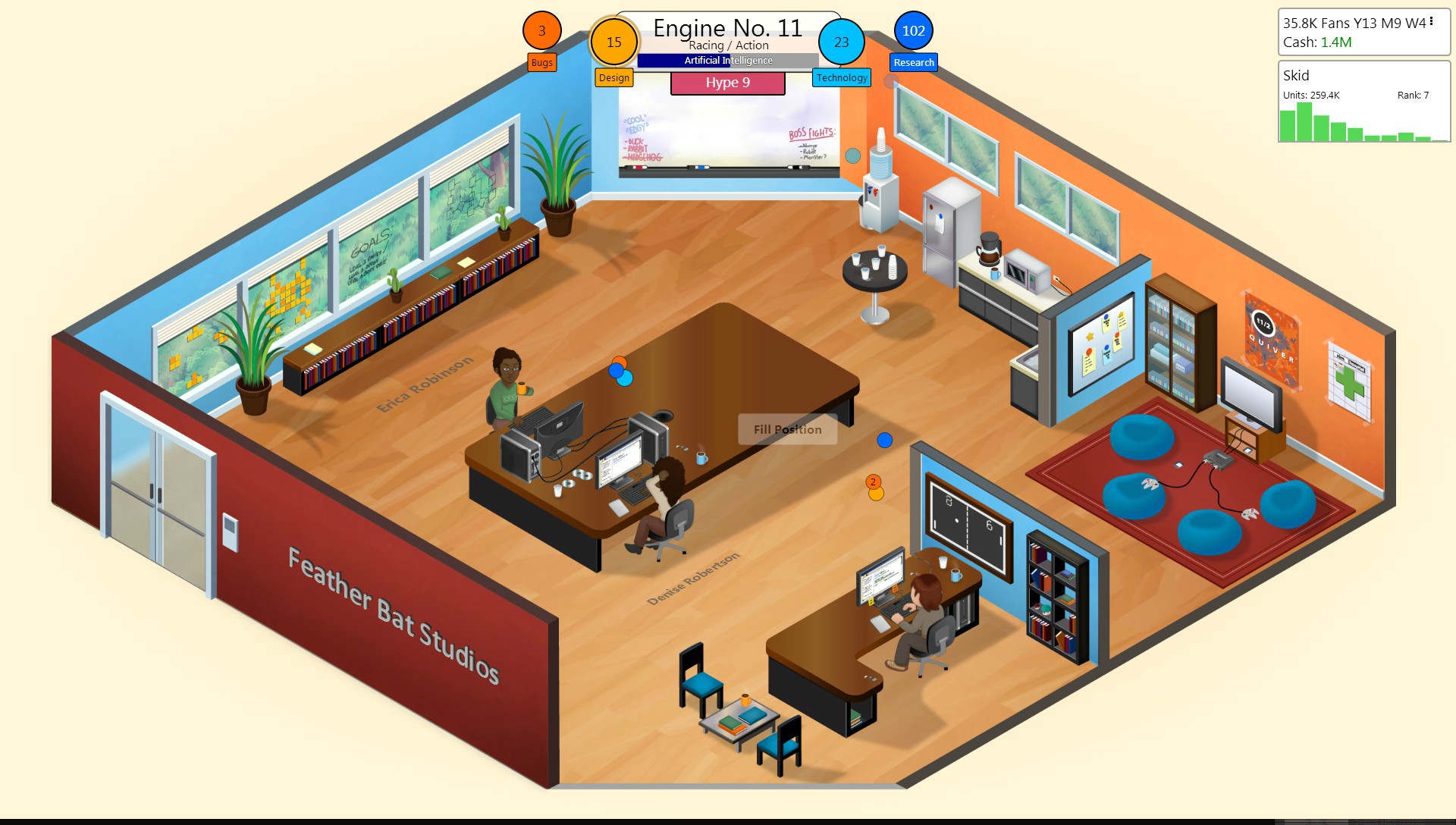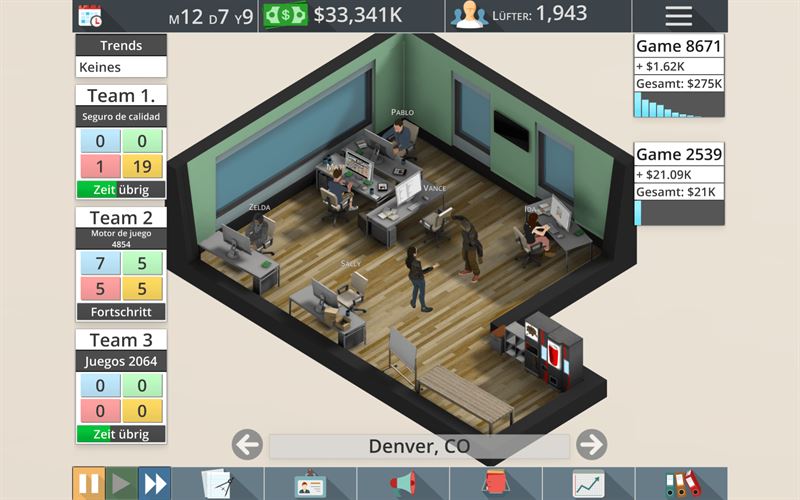Games About Making Games
I'm going to start this off by saying that this isn't meant to be a review of the games I am talking about. Instead, I am going to analyze the different mechanics of the three games and how they differ. I'm also going to go over how they represent actual game development differently. I also want to mention that I might actually be the only person who has actually played all three of these games as much as I have, so this may just be a blog post for myself, which is okay. The three games examined in this post will be Game Dev Story (Kairosoft), Game Dev Tycoon (Greenheart Games) and Game Studio Tycoon 3 (Ashley Sherwin).
I also want to add that I myself am I game developer. While I don't have experience working on a game with a massive team or budget, I have worked on a couple of published games, so to an extent, I understand how game development is supposed to work. My goal in this analysis is to examine these three games and how they similarly and differently represent game development and all its complexities. I am hopeful that my experience will help me provide some unique insight as I analyze these games.
All three of these games start in the exact same spot. The player is a solo developer at the beginning of video game history making games for fictional versions of early game consoles or PC. We'll jump ahead in this analysis and assume the player is to a point in which they have recruited some team members and aren't too worried about money. They pick a theme and a genre that the game will follow. For Game Studio Tycoon 3 (GST3), all genres and themes are available to the player from the get-go. Players can make any kind of game they see fit from the beginning. In Game Dev Story (GDS) and Game Dev Tycoon (GDT) the player starts with a random set of themes they can work with. In GDT the player can go with any genre from the beginning, but in GDS the player also starts with a random set of genres as well. In GDT themes are unlocked through using research points the player receives while making games. In GDS they are unlocked through hiring new staff or training existing staff using generated research points.Finally, after the time has passed and the game is completed it is time for release. The process is pretty much the same in all of these games. You see what the points you generated add up to and choose to do any marketing for your game (In all of these games, this comes down to paying different amounts of money to drum up excitement for your game.) The game goes out, you get a handful of review scores and then the money comes in depending on how good the game is. That is the entire game development process in these games. Of course, there are more details and differences in these games, but I don't want to spend too much time explaining them all.
So, analyzing how these different games make me feel, I will say the most gratifying is GDT. The process is more in depth and feels like it takes more work to get a successful game out the door. GDS definitely feels the most fun and video game-y. This is supported by the nice pixel art and chip music. GST3 is much more superficial than the other two and is honestly more boring to me. There just isn't any growth in the games that the player can make throughout, and things quickly grow stale compared to the others.
All three of these games follow a Year - Month - Day timeline that loosely follows actual game history in the timing of console releases and technological developments. This timeline also represents the amount of time the player needs to keep their game development empire alive to "complete" each game. The amount of time varies in each game as well, but generally they function the same. The best part of each of these games is the parody versions of the real-world consoles that release in which the player can make games for. GDS sticks to its theme with silly versions of the real consoles. GDT does a good job of reflecting real life consoles and at one point even takes a 2013 guess at what the post PS4 and Xbox One consoles would be. GST3 similarly to GDT mostly reflects reality, however early in the game injects some fictional consoles to make the early game more interesting. The concept of taking the player through the history of video games is an exciting one and it makes for a good game loop. It makes things in the games feel much more real as they reflect reality.


Comments
Post a Comment